As with the decision of when to start heaving to, the decision of when to start sailing again is something you should carefully consider. Do not take the timing from the generated path for when to sail again as a recommendation.
The weather routing solver much prefers for a vessel to be moving than to be stationary. This can lead to some surprising results.
A nice path
Consider this example from the introduction of a vessel which heaves to in the mid Atlantic:
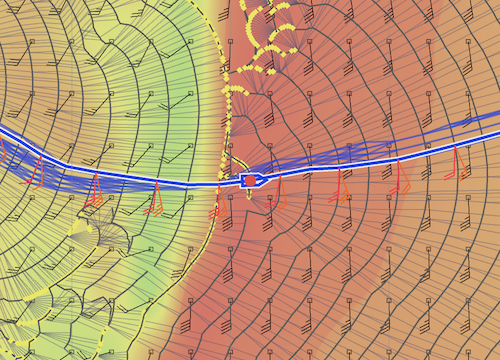
The path shown looks pretty reasonable. It advances into the region where you would be hove to, stays stationary for a period of time, and then resumes sailing toward the target again. As a navigator, you would need to remember that the location where you resume sailing will be different from that shown, and the timing of when you sail again may be different, but that generally looks reasonable.
A surprising path
Consider another example from the mid Atlantic. In this example, the vessel is set to avoid wind speeds greater than 30 knots apparent:
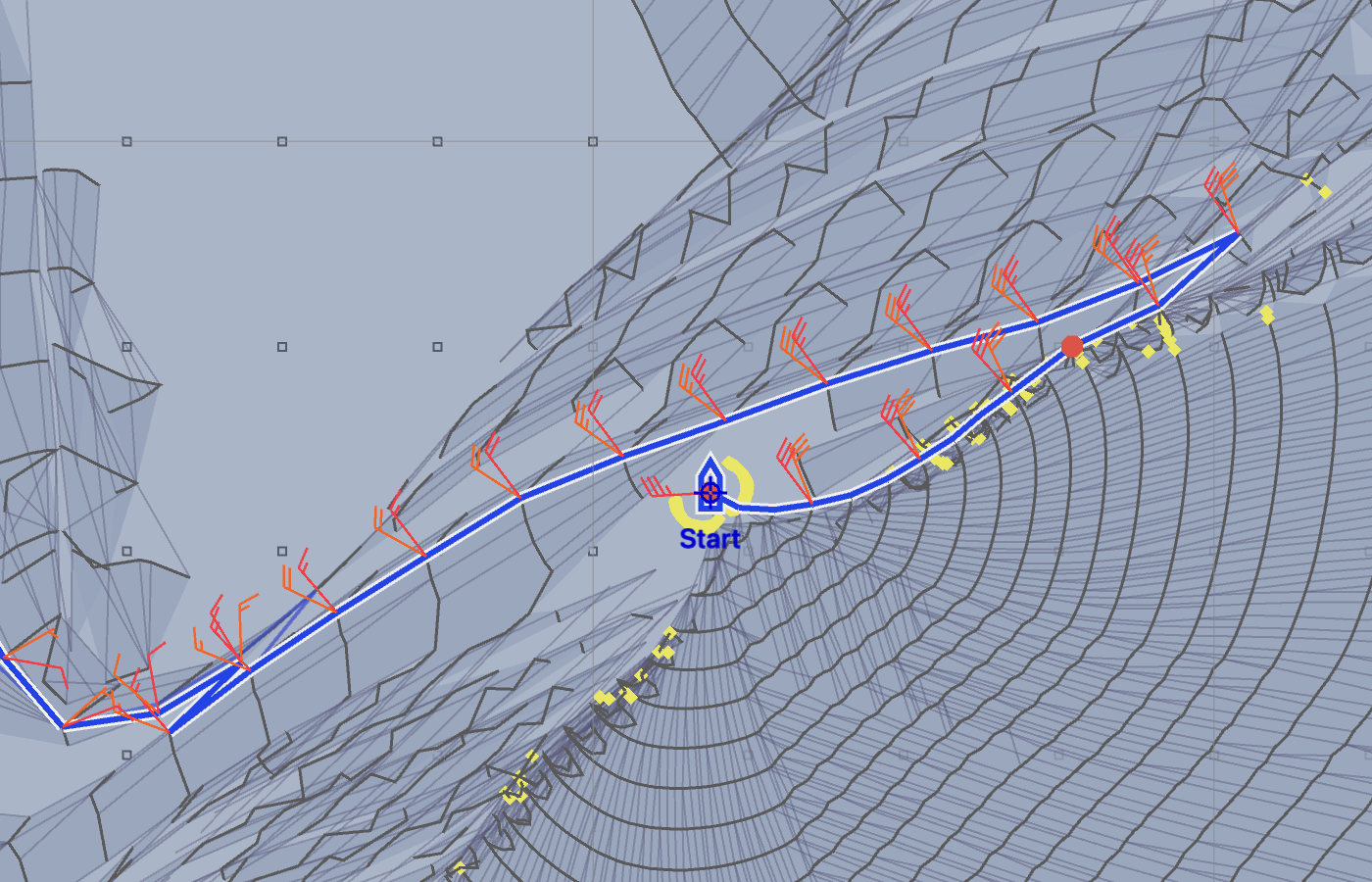
This path has two hove-to sections. The boat starts out being hove to for 5 hours, sails briefly, and then heaves to again for 5 more hours (at the red dot.) The target point for this solution is far to the NNW of this image. Why on earth is the vessel starting to sail in the wrong direction only to tack and then pass close by where it was earlier?
Recall that the solver prefers to be moving than stationary. As soon as it finds a sailing angle that allows it to start moving again, regardless of the direction, it will do so. In this case, it found a downwind sailing angle that was less than 30 knots and has started to sail.
In this example, the forecast wind when the vessel started to sail was NW 34.
At the end of the second hove to section, at the red dot, in 13
hours, the forecast winds at the original spot are NW 28. At the point in
the path where the vessel is north of the hove to point, which is 5nm
north and 20 hours later, the forecast winds are now NW 22.
As a navigator, everything else being equal, I would not start sailing knowing that I would need to heave to again in a short while, further away from my target than I was originally, and that if I was to remain hove to and wait a little longer, that the winds would greatly moderate and I could start sailing toward my destination instead.
Using the departure ensemble
You can consider the decision of when to start sailing, once you are hove to, as being similar to a departure. The departure planning ensemble may be useful to help decide when to start sailing.
Here is an example showing six departures, each spaced three hours apart. The first departure is the one which is highlit and was discussed above:
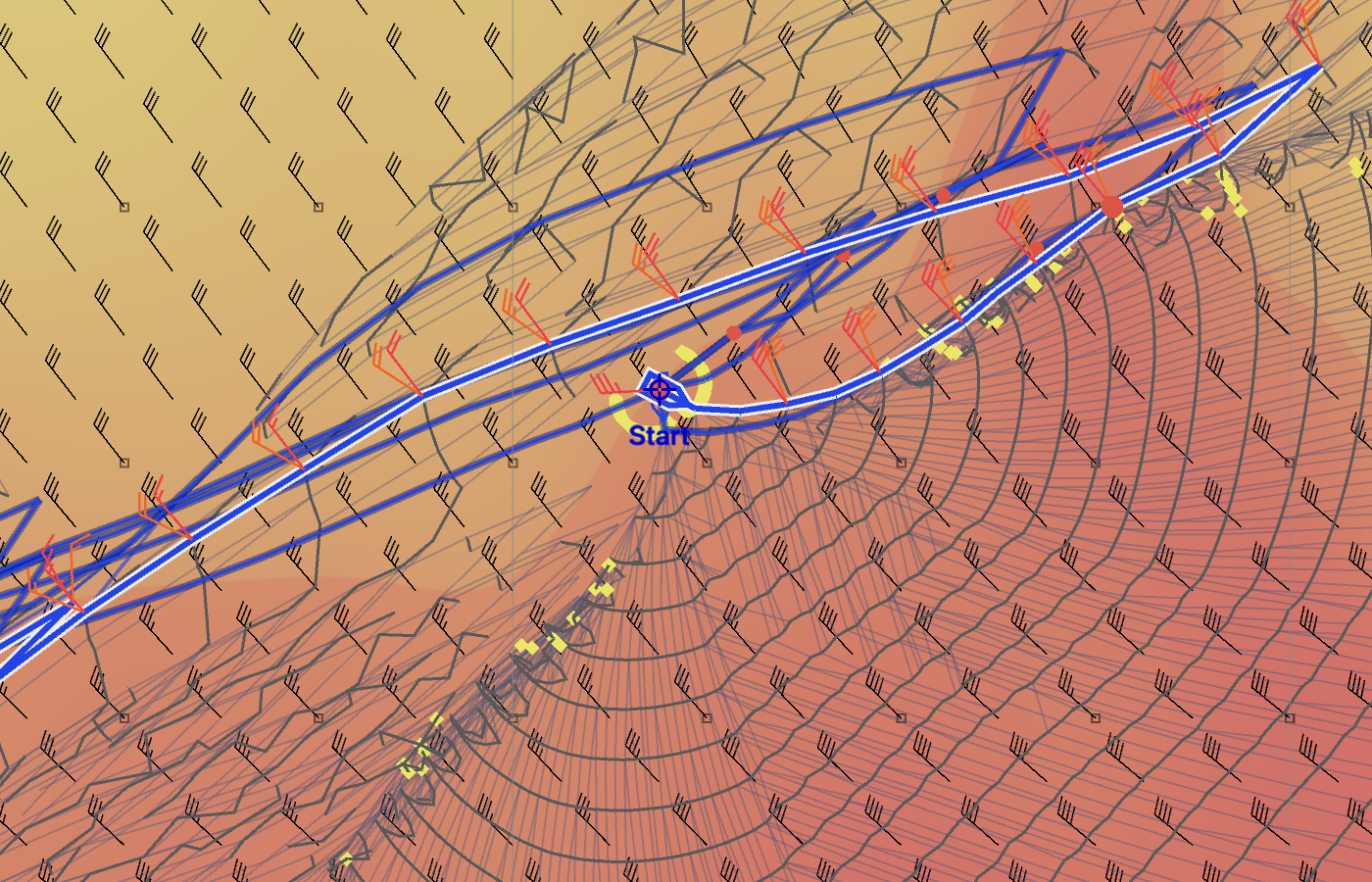

The first, second and third departures each have the boat starting to sail, only to heave to again.
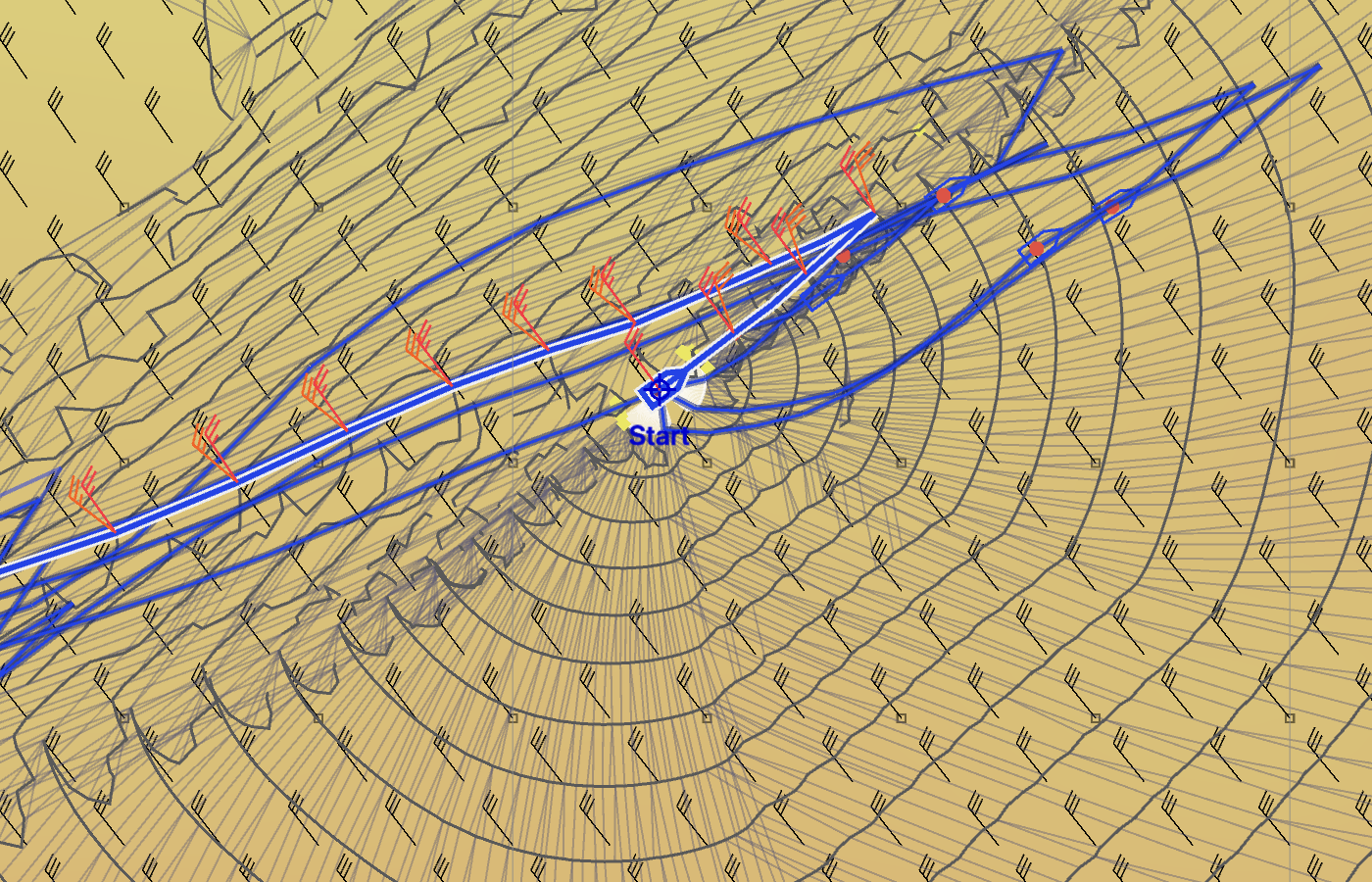 The fifth departure - 12 hours
The fifth departure - 12 hoursThe fourth and fifth departures are pretty similar. The fourth departure starts out hove to for a short while, and then starts sailing. However, notice (from the meteogram) that the fifth departure takes roughly three hours less to arrive, after being hove to for three additional hours - this is pretty much a wash. The fourth and fifth departures arrive at around the same time, but in the fourth you sail further away and then return again.
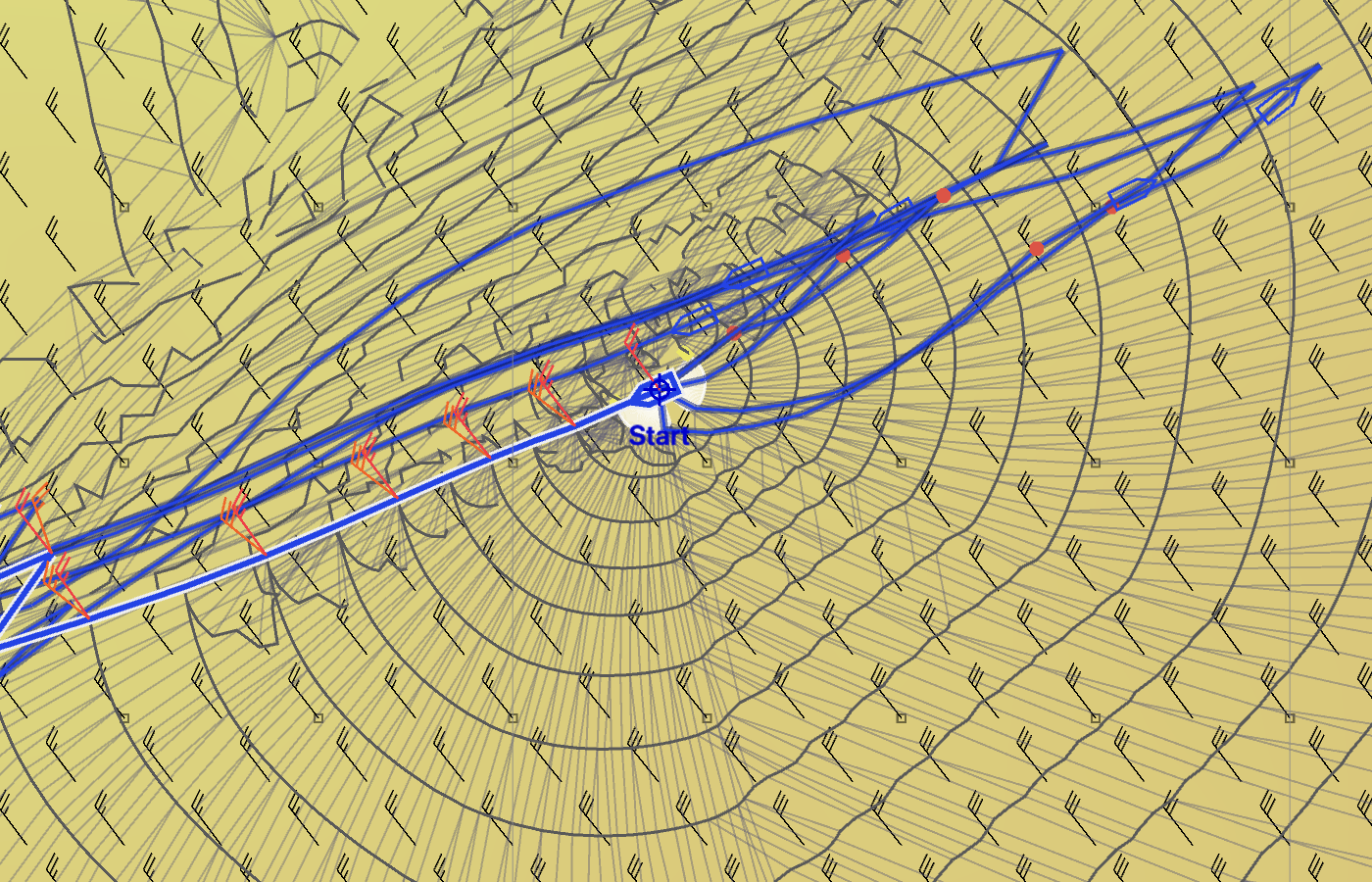 The sixth departure - 15 hours
The sixth departure - 15 hoursThe sixth departure is the first one which starts out sailing toward the destination. It arrives slightly after the fifth departure, remains hove to for longer and experiences slightly less wind.
Somewhere between the fifth and sixth departures, 12 to 15 hours away, it looks like you can start sailing toward your destination.
When should you start sailing again? That’s for you to decide! These tools are designed to help you think about the decision, but the actual decision remains with you, and will likely factor in many other factors, such as crew condition (boats are more stable while sailing,) your surroundings, how well the forecast winds compare to the actual winds, etc.